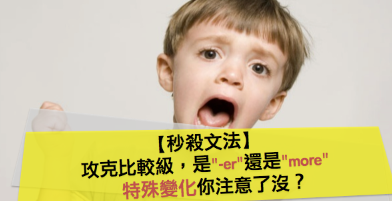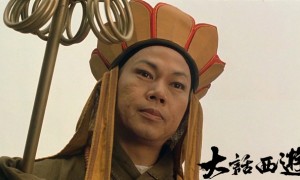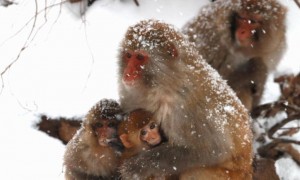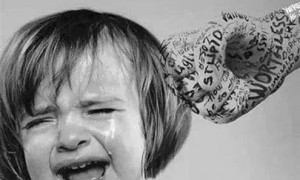1. Carrie has —- than I do.
(A) freer time (B) more free time (C) much free time (D) free more time
2. It is much —- in this room than it is in my office.
(A) more hotter (B) hotter (C) hot (D) hoter
3. Their prices have always been —- than ours.
(A)highest (B) the higher (C) higher (D) the highest
4. There was —- rain in June all-year.
(A)the less (B) the least (C) the more (D) many
5. The more we have, the —- we want.
(A) much (B) more (C) many (D) the most

小测验答案:B、B、C、B、B
接着就来介绍,「形容词」在比较级文法中的不同变化啰!
规则一:单音节形容词,在字尾加-er
clean ___________ 2. cold____________ 3. cheap ________________
short ___________ 5. tall ____________ 6. small________________
规则二:原形容词字尾为 e ,加上-r
cute ____________ 2. fine___________ 3. large ___________
nice______________ 5.late____________ 6. safe ___________
规则三:原形容词字尾为子音 + y ,去 y ,加-ier
1.busy ___________ 2. dry_____________ 3. early ____________
4.easy____________ 5. happy___________ 6. heavy____________
规则四:原形容词字尾为短母音 +子音 ,重覆字尾 ,加-er
1.red _____________ 2. big________________ 3. hot _____________
4.thin ____________ 5. wet_______________ 6. fat ______________
规则五:三个或以上音节的形容词,在形容词前面加 more
1.beautiful ___________ 2. expensive ______________
3.delicious ___________ 4. difficult ______________
规则六:不规则变化
不规则变化相对来说,是大家比较会错的部分,这边就直接帮大家整理出来,同时提供最高级的形态。
good-better-best
bad-worse-worst
many-more-most
much-more-most
few-fewer-fewest
little-less-least
far-further-furthest







